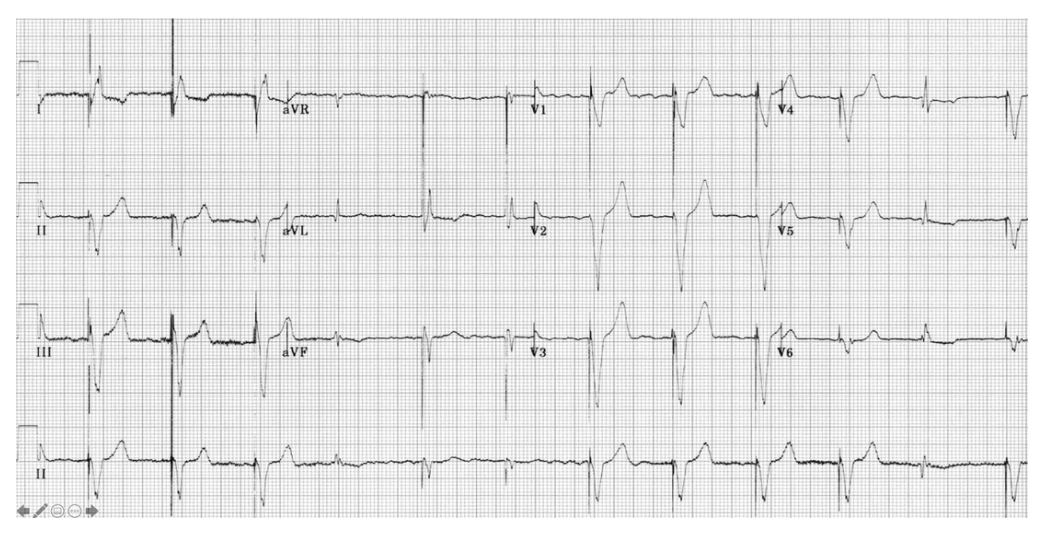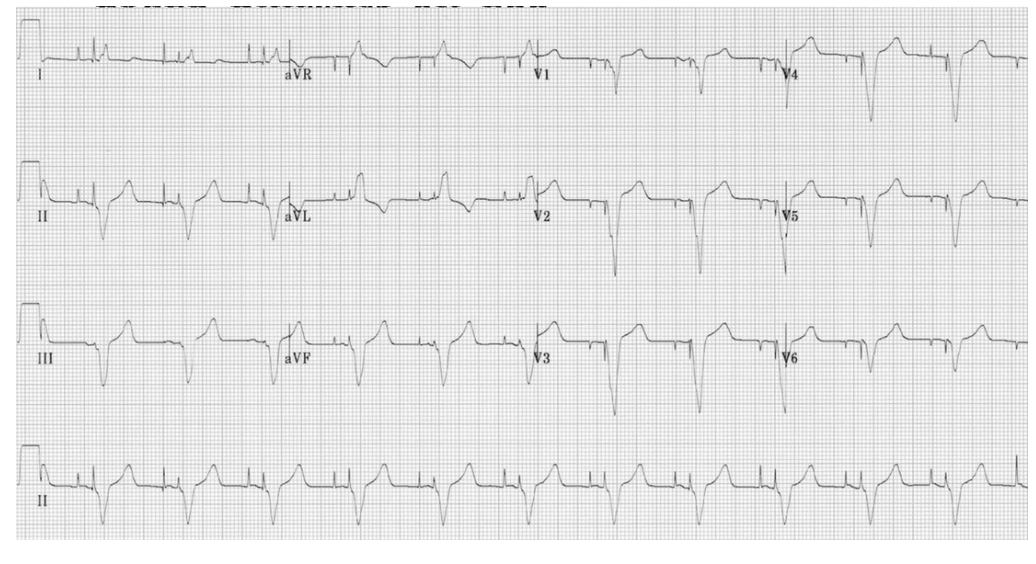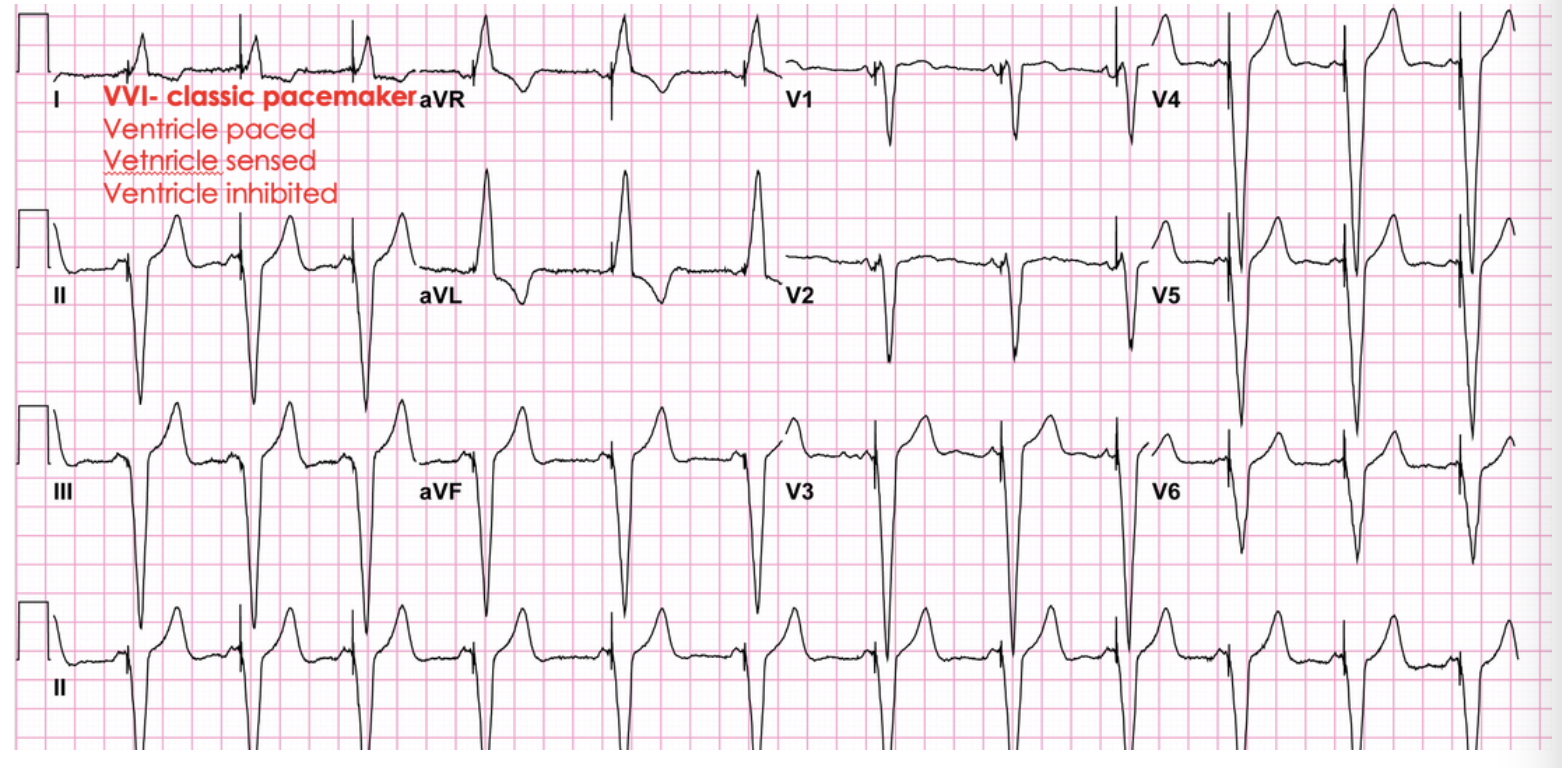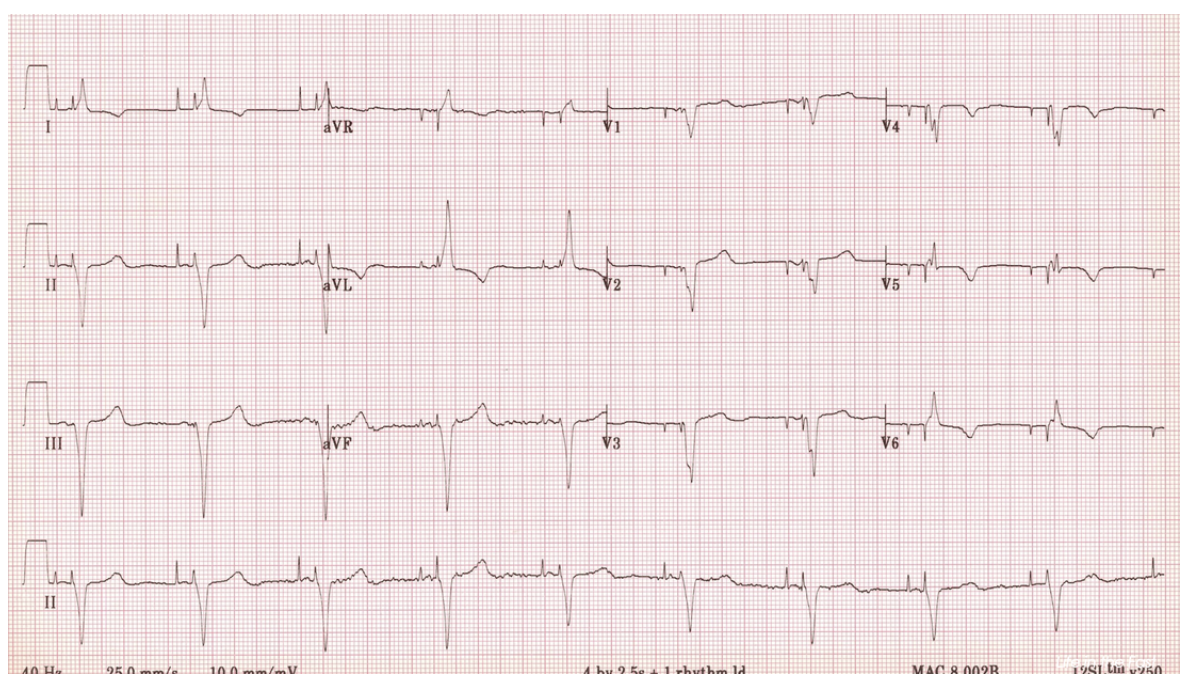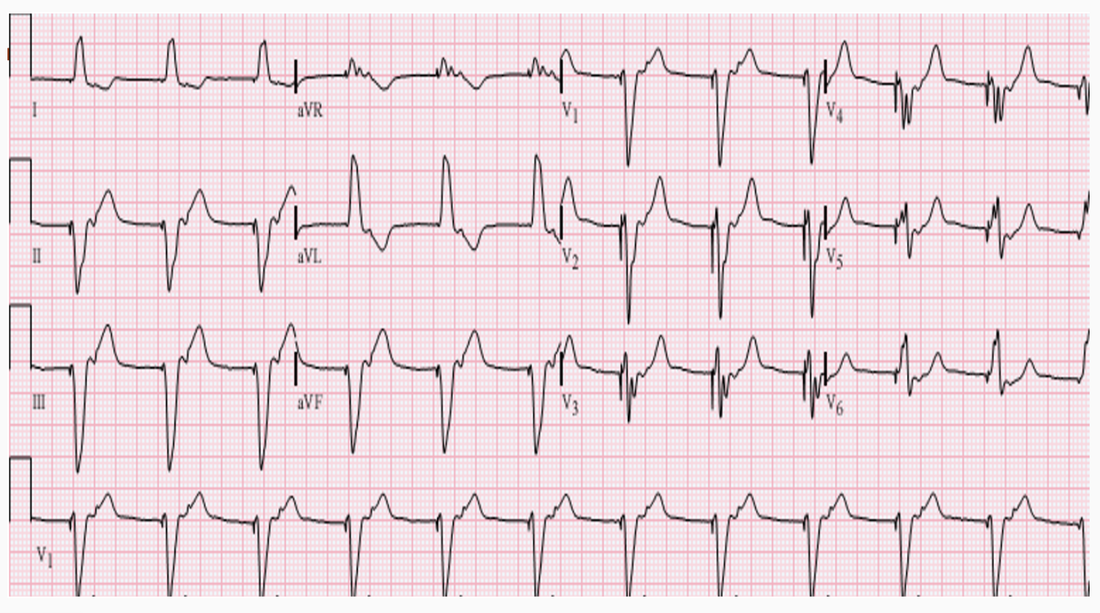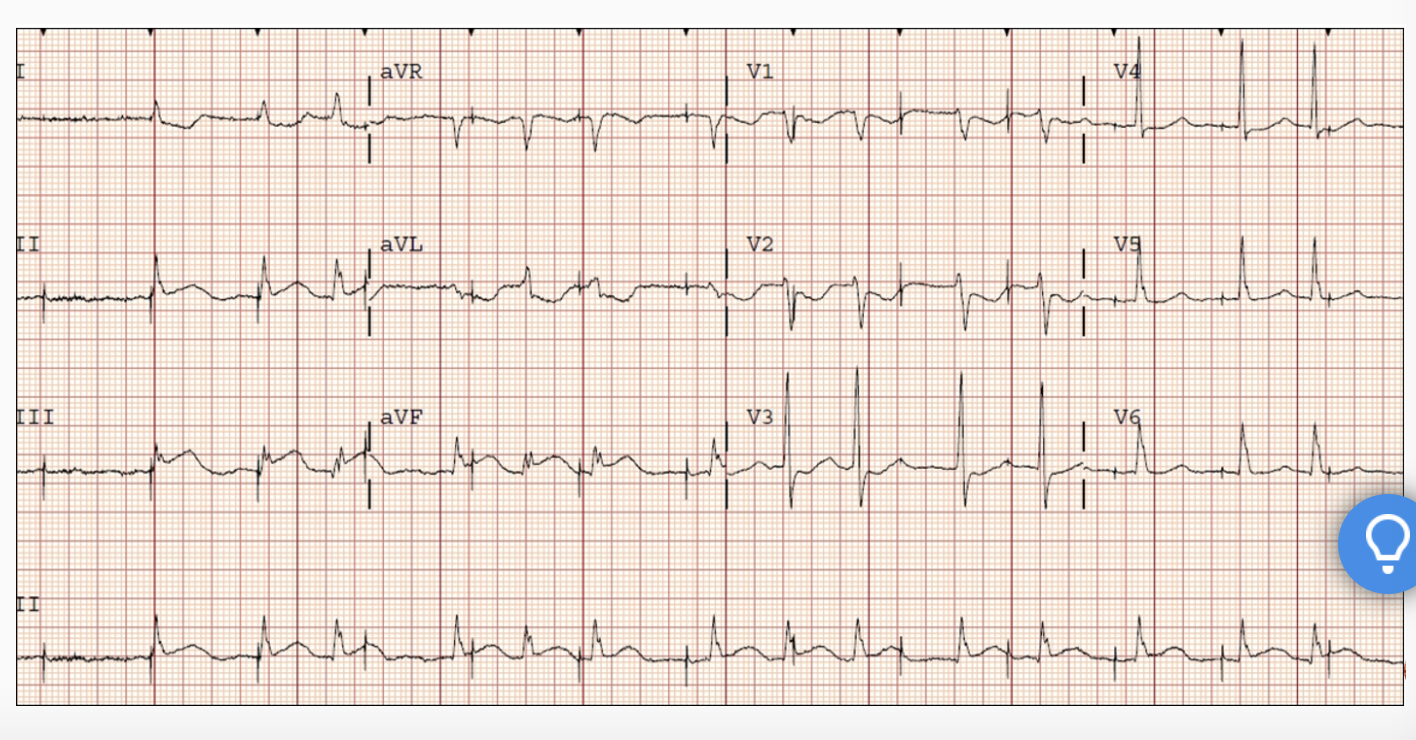The nomenclature of what type of pacemaker it is, and how it is sensing and pacing can be challenging, however, most of that information will be on the patient's pacemaker card.
Here are 3 paced ECG's.
Problems with Pacemakers
The main issues with pacemakers are:
- Failure to conduct
- Failure to Capture
- Failure to Sense
Naming Pacemakers1st letter – chamber/s where stimulation(pacing) occurs
2nd letter refers to chamber where sensing occurs 3rd letter refers to how the pacemaker responds to a sensed event
|
An Example
Ventricular Paced. Inhibited Impulse if the Ventricles contract
V V I Ventricular Sensing |
Here is what a classic VVI pacemaker would look like.
Here is a DVI pacemaker
D- Dual Chamber ie paces both atrium and ventricle
V- Only senses the Ventricle
I- Inhibited by ventricular activity
V- Only senses the Ventricle
I- Inhibited by ventricular activity
PACED ECG TROUBLESHOOTING- TRY THESE EXAMPLES
START WITH A 4 STEP APPROACH TO TROUBLESHOOT.
- What is the rate?
- is there a P wave or QRS after each pacing spike?
- Are pacing spikes seen throughout the ECG?
- Are there pacing spikes where they shouldn't be?


